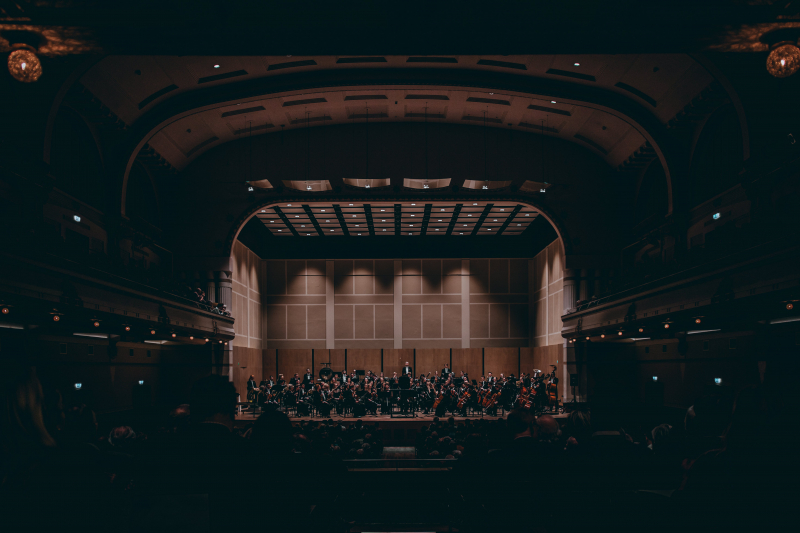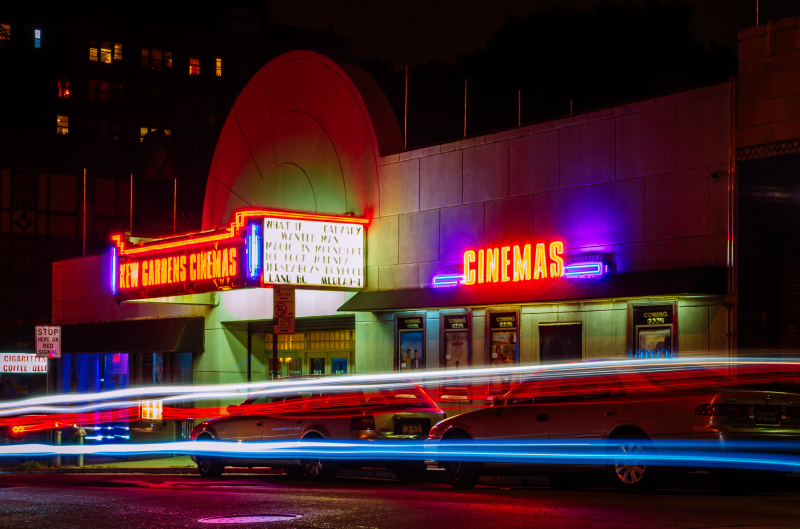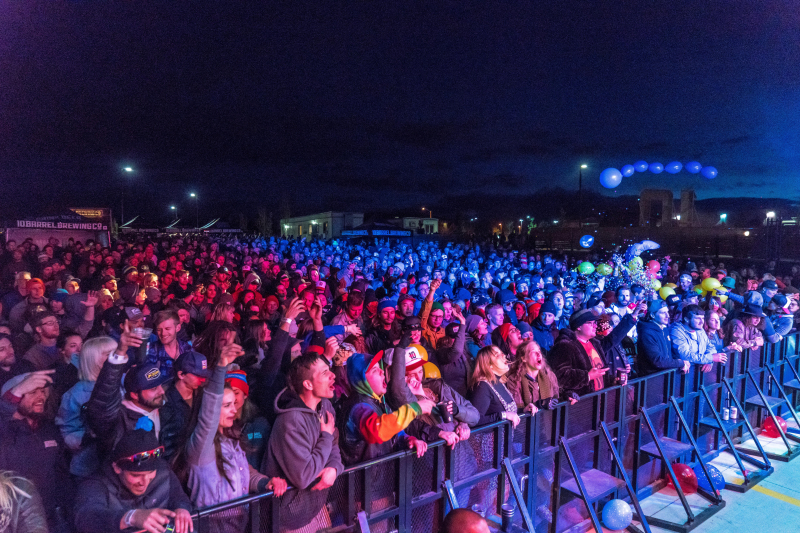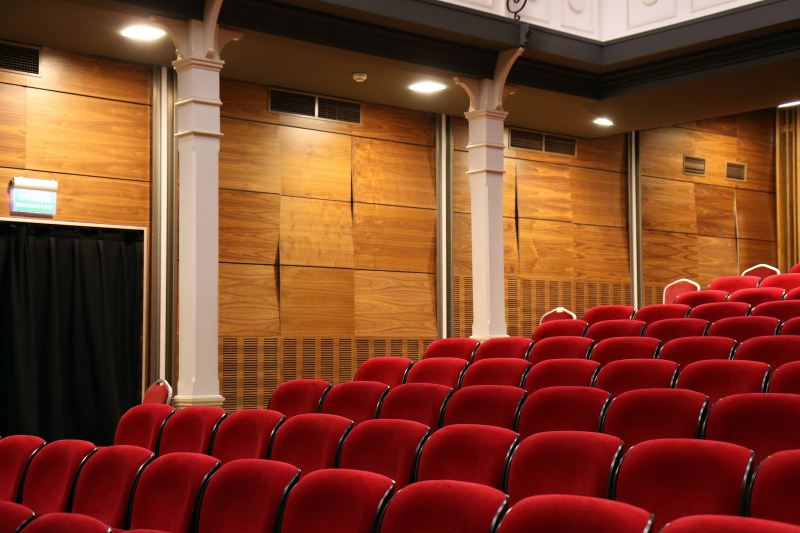Top 10 Compare and Contrast Essay Examples on Entertainment
Compare and contrast entertainment essays provide a vibrant space for exploration, encouraging individuals to analyze the similarities and differences in ... read more...various aspects of the entertainment industry. Toplist provides these essays to foster critical thinking and a nuanced understanding of our diverse entertainment landscape. In the upcoming examples, we'll delve into different entertainment topics, offering a guide for expressing perspectives effectively.
-
Essay topic: Reading Books and Watching Movies.
Answer:
Reading books and watching movies are two popular forms of entertainment, each offering a unique experience. These activities differ in terms of engagement, imagination, and the sensory involvement they provide.
Reading books engages the mind in a different way compared to watching movies. When reading, the mind creates vivid images and scenarios based on the words on the page. Readers use their imagination to visualize characters, settings, and events. The process of reading stimulates creativity and allows readers to interpret the story in their unique way. In contrast, watching movies presents a visual and auditory experience. Viewers witness the story unfold on the screen, and filmmakers use visuals, music, and dialogue to convey the narrative. Movies offer a more passive experience as the visuals are presented directly.
The level of time involvement is another factor to consider. Reading a book often requires a more significant time commitment, as readers need to invest hours to complete a story. Books provide a deep and immersive experience, allowing readers to delve into the details of the plot and characters. On the other hand, watching movies is a more time-efficient activity. Movies typically have a fixed duration, allowing viewers to experience a complete story in a shorter time frame.
In terms of portability and accessibility, books are more versatile. Readers can carry books anywhere, and they do not require electricity. Books are accessible even in places with limited resources. Movies, however, are dependent on screens and electricity. While they offer a visual spectacle, their accessibility may be limited in certain environments.
Both activities cater to different sensory preferences. Reading books engages the sense of touch as readers turn pages and the sense of sight as they read text. Watching movies primarily engages the sense of sight and hearing, providing a more audio-visual experience.
In conclusion, reading books and watching movies offer distinct forms of entertainment. Reading stimulates the imagination and involves a significant time commitment, while watching movies provides a visual and auditory experience in a more time-efficient manner. The choice between these activities often depends on personal preferences and the desired level of engagement.

Photo by Pixabay via pexels 
Photo by Pixabay via pexels -
Essay topic: Traditional Board Games and Video Games.
Answer:
Traditional board games and video games are two types of games that offer distinct experiences, each having its own set of characteristics. These games differ in terms of social interaction, accessibility, and the way they engage players.
Traditional board games are often played in a group setting, involving face-to-face interaction among players. Games like Monopoly or Chess encourage social bonding, as players sit around a table, communicate, and strategize. These games provide a tangible and physical experience, with players handling cards, moving pieces, and using boards. In contrast, video games are often played individually or online with remote players. Video games require electronic devices like computers or consoles and may involve less direct social interaction.
Another difference lies in the accessibility of these games. Traditional board games are easy to access and play, requiring only the game set and participants. These games are suitable for various age groups and can be enjoyed with minimal equipment. On the other hand, video games often demand specific electronic devices and can have age restrictions. Access to video games may depend on the availability of technology.
The engagement level varies as well. Traditional board games tend to have simpler rules, making them accessible to a broad audience. These games often focus on strategy and critical thinking. Video games, however, may have more complex controls and gameplay mechanics. The immersive graphics and dynamic interfaces in video games can captivate players with a more visually intense experience.
When considering the physical activity involved, traditional board games generally require minimal movement. Players sit and interact around a board. In contrast, some video games, particularly those with motion controls, can involve physical activity and gestures. Video games may offer a more dynamic experience in terms of movement.
In conclusion, traditional board games and video games provide diverse gaming experiences. Traditional board games emphasize social interaction and simplicity, while video games offer a more technologically advanced and visually immersive experience. The choice between them often depends on personal preferences, the desired level of social engagement, and access to technology.

Photo by cottonbro studio via pexels 
Photo by JESHOOTS.com via pexels -
Essay topic: Concerts and Music Festivals.
Answer:
Concerts and music festivals are two distinctive ways to experience live music, each offering a unique atmosphere and engagement for music enthusiasts.
Concerts are typically events where one or more artists perform in front of a live audience. These events are often held in concert halls, theaters, or even outdoor venues. Concerts provide an intimate setting where the audience can focus on the musicians and the music. The atmosphere is usually more controlled, allowing for a direct connection between the artist and the audience. Attendees may have assigned seating, creating a more organized environment.
On the other hand, music festivals are larger-scale events featuring multiple artists across various genres. These festivals often take place outdoors in open spaces, attracting a diverse crowd. Music festivals provide a more dynamic and communal experience, with attendees moving freely between different stages to explore various performances. The atmosphere is often characterized by a sense of freedom and shared enthusiasm for music.
One significant difference between concerts and music festivals lies in the scale of the events. Concerts are more focused, centered around a specific artist or band, offering a concentrated dose of their music. In contrast, music festivals showcase a broader range of artists, allowing attendees to discover new music and genres.
Another distinction is the duration of the experience. Concerts are usually shorter, with a specific artist or band performing for a set period. Music festivals, on the other hand, can span multiple days, providing a more immersive and extended musical experience. Attendees at music festivals often camp on-site, contributing to the festival's community feel.
The interaction at concerts and music festivals differs as well. Concerts offer a more intimate connection with the artist, as the audience is usually closer to the stage. Music festivals, with their diverse lineup, create a vibrant social environment where attendees share the experience with a broader community of music lovers.
In conclusion, concerts and music festivals cater to different preferences in the realm of live music. Concerts provide a focused and intimate setting, allowing for a deep connection with a specific artist. On the other hand, music festivals offer a more extensive and communal experience, celebrating a variety of musical genres in a larger, open setting. The choice between them depends on individual preferences for scale, atmosphere, and the desire for exploration in the world of music.

Photo by Wendy Wei via pexels 
Photo by Sebastian Ervi via pexels -
Essay topic: Live Theater and Movie Theaters.
Answer:
Live theater and movie theaters offer distinct ways to enjoy performances and films, each providing a unique experience for audiences.
Live theater involves watching a play or performance in a live setting, usually within a theater space. The actors perform on a stage, and the audience witnesses the story unfold in real-time. The atmosphere in live theater is immediate and personal, with the audience present in the same space as the performers. The connection between actors and viewers is tangible, creating a shared experience.
In contrast, movie theaters are venues where films are screened for an audience. Unlike live theater, movies are pre-recorded, allowing for multiple screenings. Movie theaters provide a controlled environment with specialized audio and visual technology, enhancing the cinematic experience. The audience watches the story unfold on a large screen, creating a visual spectacle.
One significant difference is the mode of storytelling. Live theater relies on the physical presence of actors, emphasizing facial expressions, gestures, and voice modulation to convey the narrative. In contrast, movies utilize advanced cinematography, special effects, and editing to tell stories visually, often with a higher degree of realism.
Another distinction lies in the reproducibility of the experience. Live theater performances are unique to each show, influenced by the energy of the audience and the nuances of the live performance. On the other hand, movies can be replicated in exactly the same way for each screening, allowing for a consistent experience for every viewer.
The sense of immediacy in live theater contributes to a more intimate connection between performers and the audience. The live interaction and the shared physical space create a distinctive atmosphere. In contrast, movie theaters provide a more controlled and immersive visual and auditory experience, but the connection is indirect, as the film was recorded beforehand.
In conclusion, live theater and movie theaters offer diverse ways to engage with performances and stories. Live theater emphasizes the immediacy and personal connection between actors and the audience, while movie theaters provide a cinematic experience with advanced technology and the reproducibility of recorded films. The choice between them depends on individual preferences for live interaction, visual spectacle, and the nature of storytelling.

Photo by King of Concepts via pexels 
Photo by Nathan Engel via pexels -
Essay topic: TV Series and Reality Shows.
Answer:
TV series and reality shows are two popular forms of television entertainment, each offering a distinct viewing experience for audiences.
TV series, also known as scripted shows or dramas, are fictional stories created by writers and performed by actors. These shows follow a pre-planned plot, often with recurring characters and episodes that build on one another. The narratives can span various genres, such as drama, comedy, or mystery. Viewers become attached to the characters' journeys, and the unfolding storylines keep them eagerly anticipating each new episode.
On the other hand, reality shows present unscripted content, showcasing real people in various situations or challenges. These shows often include competitions, personal interactions, and unique scenarios. Unlike TV series, reality shows rely on the unpredictability of real-life events, offering a glimpse into the lives and experiences of the participants. Audiences are drawn to the authenticity and unpredictability of these shows.
One significant difference between TV series and reality shows lies in the nature of the content. TV series present fictional narratives, providing an escape into imaginary worlds or relatable stories. In contrast, reality shows aim to capture genuine emotions, reactions, and interpersonal dynamics, blurring the lines between entertainment and real-life situations.
Another distinction is the degree of viewer engagement. TV series often involve intricate plotlines and character development, encouraging viewers to invest emotionally in the fictional world. Reality shows, however, derive their appeal from the immediacy of real-life situations, allowing audiences to witness unfiltered reactions and authentic human experiences.
While TV series offer a more structured and planned viewing experience, reality shows thrive on the spontaneity of unscripted moments. TV series provide an escape into carefully crafted narratives, allowing viewers to connect with characters and story arcs. In contrast, reality shows offer a voyeuristic peek into the unscripted, unpredictable aspects of human behavior, creating a sense of authenticity.
In conclusion, TV series and reality shows cater to different tastes in television entertainment. TV series provide scripted narratives and character-driven stories, offering a planned and often immersive experience. Reality shows, on the other hand, offer an unscripted, real-life perspective, capturing the unpredictability and authenticity of human experiences. The choice between them depends on individual preferences for storytelling styles and the desire for either fictional or reality-based content.

Photo by Lisa Fotios via pexels 
Photo by JESHOOTS.com via pexels -
Essay topic: Outdoor Concerts and Indoor Concerts.
Answer:
Outdoor concerts and indoor concerts are two distinct ways to enjoy live music, each offering a unique atmosphere and experience for music enthusiasts.
Outdoor concerts, held in open spaces like parks or stadiums, provide a vibrant and open-air setting. The natural surroundings enhance the overall experience, with the sky above and the possibility of feeling a gentle breeze. The expansive space allows for larger audiences, creating a sense of unity among concert-goers. Outdoor concerts often feature big-name artists and bands, drawing crowds for memorable performances under the stars.
On the other hand, indoor concerts take place within enclosed venues such as theaters or arenas. The controlled environment allows for precise sound quality and lighting effects. Indoor concerts provide a more intimate setting, bringing the audience closer to the performers. The atmosphere inside is often charged with energy as the music reverberates within the walls, creating a shared experience among attendees.
One notable difference between outdoor and indoor concerts is the ambiance and natural elements. Outdoor concerts embrace the unpredictability of weather, offering a chance to enjoy music in the sunshine or under the moonlight. However, this exposure to the elements can also lead to challenges like rain or wind. Indoor concerts, being sheltered, eliminate weather concerns, providing a consistent environment for both performers and the audience.
Another distinction lies in the size of the venue and crowd. Outdoor concerts accommodate larger audiences, creating a festival-like atmosphere. The vastness of the space allows people to spread out and enjoy the music in different ways. In contrast, indoor concerts have a more limited capacity, fostering a closer connection between the performers and the audience.
While outdoor concerts boast a sense of freedom and natural beauty, indoor concerts offer controlled acoustics and a more intimate connection with the music. The choice between them depends on personal preferences for the overall atmosphere and the type of experience one seeks.
In conclusion, both outdoor and indoor concerts offer unique advantages for music enthusiasts. Outdoor concerts provide an open-air experience with the beauty of natural surroundings, while indoor concerts offer controlled environments, ensuring optimal sound quality and a more intimate connection with the music. Whether under the stars or within the walls of an enclosed venue, live music continues to captivate audiences in diverse ways.

Photo by ELEVATE via pexels 
Photo by Pixabay via pexels -
Essay topic: Reading Comics and Graphic Novels.
Answer:
Reading comics and graphic novels are two engaging ways to explore stories through visual art, each offering a distinctive experience for readers.
Comics, often found in newspapers or standalone issues, are short and episodic narratives. They use a combination of images and brief text to tell a story in a concise manner. Comics are known for their humor, with characters often engaging in witty dialogue or humorous situations. These bite-sized stories are accessible and provide quick entertainment.
In contrast, graphic novels are longer, book-length narratives that offer a more extended and in-depth storytelling experience. They delve into complex plots and character development, combining intricate visuals with substantial text. Graphic novels cover a wide range of genres, including drama, fantasy, and non-fiction, making them suitable for readers with diverse interests.
One significant difference is the length and complexity of the narratives. Comics are brief and straightforward, usually focusing on delivering a punchline or a short story. Graphic novels, on the other hand, allow for a more immersive experience, enabling authors to explore intricate plots and character arcs in greater detail.
Another distinction lies in the visual style and presentation. Comics often employ a simplistic art style with bold lines and vivid colors, emphasizing humor and brevity. Graphic novels, however, showcase a broader range of artistic styles, from highly stylized and detailed illustrations to more realistic depictions, contributing to a richer visual storytelling experience.
While both comics and graphic novels use a combination of images and text, the choice between them depends on the reader's preferences for the depth of the narrative and the visual style. Comics offer quick, light-hearted entertainment, while graphic novels provide a more substantial, immersive reading experience.
In conclusion, reading comics and graphic novels are distinct yet enjoyable ways to engage with visual storytelling. Comics offer brief and humorous narratives, ideal for quick enjoyment, while graphic novels provide a more extended and intricate storytelling experience. Both forms contribute to the vibrant world of visual literature, catering to readers with varying preferences and interests.

Photo by Markus Spiske via pexels 
Photo by Pixabay via pexels -
Essay topic: Drawing and Coloring.
Answer:
Drawing and coloring are two creative activities that involve expressing oneself through art, yet they differ in the process and the focus of artistic expression.
Drawing, the act of creating images on paper or other surfaces, involves using lines and shapes to represent ideas, scenes, or objects. It allows for the exploration of one's imagination and the development of artistic skills. Drawings can be simple or intricate, depending on the artist's intention, and they often involve the use of pencils, pens, or other drawing tools.
Coloring, on the other hand, involves adding color to pre-drawn images or patterns. It provides a more structured and guided artistic experience, as the outlines are already present, and the focus is on choosing and applying colors. Coloring is often associated with relaxation and enjoyment, making it a popular activity for people of all ages.
One significant difference lies in the level of artistic freedom. Drawing offers unlimited creative freedom, allowing artists to sketch whatever comes to mind. It's a form of self-expression where individuals can bring their ideas to life. Coloring, in contrast, provides a more guided experience, with the artist selecting colors to enhance pre-existing designs.
Another distinction is the process and tools used. Drawing typically involves starting with a blank canvas, and artists create images by applying lines, shapes, and shading. Various drawing tools like pencils, charcoal, or ink can be employed. Coloring, however, involves adding color to already outlined images, often using crayons, colored pencils, or markers.
While drawing and coloring share the common ground of artistic expression, drawing emphasizes creating images from scratch with artistic freedom, while coloring focuses on adding color to existing designs in a more structured manner.
In conclusion, drawing and coloring are both creative outlets that enable individuals to express themselves through art. Drawing provides limitless creative freedom, allowing artists to create from scratch, while coloring offers a structured and enjoyable experience, emphasizing the application of color to pre-drawn designs. Both activities contribute to the joy of artistic expression in their unique ways.

Photo by Pixabay via pexels 
Photo by Pixabay via pexels -
Essay topic: Cartoons and Animated Movies.
Answer:
Cartoons and animated movies are both forms of visual entertainment that captivate audiences, especially younger viewers. While they share similarities in their animated nature, they differ in terms of format, duration, and storytelling complexity.
Cartoons, commonly found on television, are typically short animated shows that span a few minutes. These episodes feature recurring characters in humorous or adventurous situations. Cartoons often follow a simple and episodic structure, allowing for quick storytelling and easy comprehension. They are a staple of daily or weekly programming, offering brief moments of entertainment.
Animated movies, on the other hand, are longer, more elaborate productions designed for the big screen. These films have a more extended duration, often ranging from 90 minutes to over two hours. Animated movies delve into complex narratives, character development, and overarching themes. They provide a cinematic experience with a complete storyline that unfolds throughout the duration of the film.
One significant distinction lies in the format and purpose. Cartoons are short, light-hearted animations primarily created for television entertainment. They often focus on humor, simple storylines, and engaging characters to capture the attention of a younger audience. Animated movies, however, are full-length cinematic experiences crafted to engage a broader audience. They may include intricate plots, character arcs, and emotional depth.
Another aspect to consider is the production scale. Cartoons are produced more quickly, often following a routine schedule for regular broadcast. The animation style in cartoons may be simpler, emphasizing efficiency in production. In contrast, animated movies undergo more extensive and time-consuming production processes, with a focus on delivering high-quality visuals and immersive storytelling.
While both cartoons and animated movies share the commonality of being animated forms of entertainment, cartoons are characterized by their brevity, humor-centric content, and television format. Animated movies, with their longer duration, complex narratives, and cinematic appeal, provide a more immersive and profound storytelling experience.
In conclusion, cartoons and animated movies contribute to the world of animated entertainment but differ significantly in their format, duration, and storytelling complexity. Cartoons offer quick and humorous bursts of entertainment on television, while animated movies provide a cinematic experience with more extended narratives and a focus on engaging a broader audience.

Photo by Pixabay via pexels 
Photo by Andres Ayrton via pexels -
Essay topic: Live Performances and Recorded Shows.
Answer:
Live performances and recorded shows are two distinct ways of experiencing entertainment, each with its unique characteristics. While both offer enjoyment, they differ in terms of immediacy, accessibility, and the overall experience they provide.
Live performances, whether concerts, theater plays, or dance recitals, happen in real-time and in front of a live audience. The immediacy of live events creates a unique atmosphere filled with energy and excitement. Attendees can witness the performers' talent firsthand, feel the raw emotions, and be part of a shared, live experience. The unpredictability of live shows adds an element of spontaneity, making each performance unique.
In contrast, recorded shows are pre-recorded and can be accessed at any time through various mediums like television, streaming platforms, or DVDs. The advantage of recorded shows lies in their accessibility, allowing people to watch at their convenience. Viewers can pause, rewind, and watch again, providing a level of control over the viewing experience. However, the drawback is the lack of immediacy and the inability to feel the live energy of the performance.
Another difference lies in the overall experience. Live performances offer a communal experience where the audience shares emotions and reactions with fellow attendees. The applause, laughter, and cheers contribute to a collective engagement. On the other hand, recorded shows provide a more intimate and controlled experience, allowing viewers to enjoy entertainment in the comfort of their homes without the influence of a live audience.
Consideration should also be given to variety and options. Recorded shows offer a vast array of choices across different genres and styles, catering to diverse preferences. Live performances, while offering variety, may be limited by location and scheduling, making it challenging for everyone to attend.
In conclusion, both live performances and recorded shows offer unique ways of enjoying entertainment. Live performances provide an immediate, communal experience filled with energy, while recorded shows offer accessibility and variety. The choice between the two depends on individual preferences, the desire for immediacy, and the type of experience one seeks.

Photo by Ronê Ferreira via pexels 
Photo by Pixabay via pexels





















